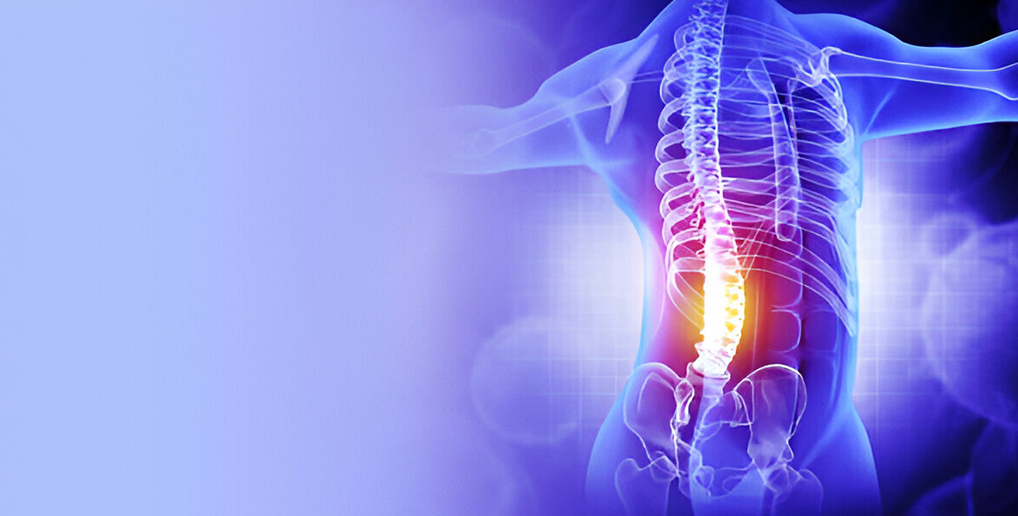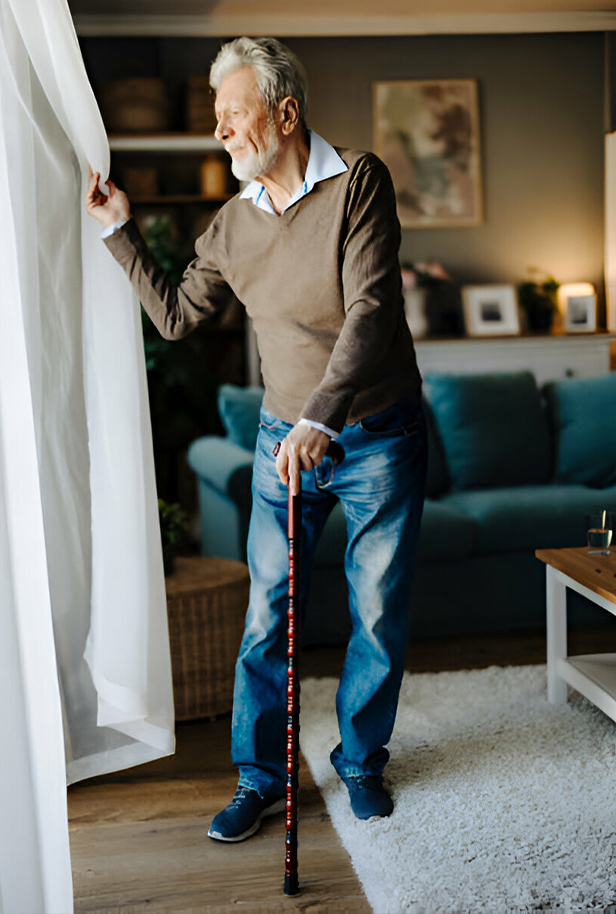
Osteoporosis Stem Cell Treatment in India
Get the best stem cell treatment for osteoporosis in India at Global Stem Cell Care. We provide affordable treatment options to treat your condition and reduce the symptoms. Stem cells have the capabilities to differentiate into specialised cell types which is useful to restore the damaged tissues. Our researchers are doing rigorous clinical trials to harness their regenerative potential and make it more effective.
Stem cells provide you the hope to enhance quality of life. That’s why it is important to treat your condition from the best stem cell centre in India which is Global Stem Cell Care. People choose us because we provide the best possible care and personalised treatment according to a patient’s needs.
Symptoms of Osteoporosis
Osteoporosis does not have any symptoms or warning signs in the early stages. Patients may not be aware they have osteoporosis until they experience a fracture, which is a common symptom of the disease. If signs do occur, the following are some of the most common ones:
Grip power is weakened, and nails are thin and fragile. If you don’t have any symptoms but have a family history of osteoporosis, you can see your doctor to determine your chance. Osteoporosis is a disease that affects the bones. Osteoporosis will escalate if not treated properly. Fractures become more likely as bones become smaller and weaker.
An injury from a fall or even a strong sneeze or cough may be signs of serious osteoporosis. Back or neck pain, as well as a lack of height, are examples. A compression fracture can result in back or neck pain as well as a loss of height. This is a crack in one of the neck or back vertebrae that is so frail that it fails under normal spinal pressure. If you have an osteoporosis-related injury, the length of time it takes to recover is determined by a variety of factors. Many factors include the location of the fracture, the severity of the fracture, as well as the age and medical background.
Do you know about Osteoporosis?
An osteoporosis-related fracture has a greater risk of occurring in women than a heart attack, stroke, or breast cancer combined. Owing to this disease, half of women, double the incidence of men, can expect to break a bone at any stage in their lives. Eighty percent of the ten million Americans diagnosed with osteoporosis currently are women.
Men account for 20% of osteoporosis sufferers. Since osteoporosis is commonly thought of as a female illness, men may overlook their own risk. However, osteoporosis affects about 2 million men in the United States. Men over 50 are 27 more more likely to break a bone due to osteoporosis than they are to have prostate cancer (11.3 percent ).
Men are half as likely as women to be tested or treated for osteoporosis, despite the fact that 25% of men will suffer osteoporosis-related bone fractures at any stage in their life. Men are more likely than women to die from a fracture caused by osteoporosis.a
This is particularly true in the case of hip fractures. Men account for one-third of all hip fractures worldwide, with up to 37% dying in the first year following the fracture—twice the incidence faced by women.
While results indicate that men are more likely to have additional medical issues at the time of the fracture and are more vulnerable to complications after surgery, researchers aren’t sure why men have a higher mortality rate.
An osteoporosis-related fracture has a greater risk of occurring in women than a heart attack, stroke, or breast cancer combined. Owing to this disease, half of women, double the incidence of men, can expect to break a bone at any stage in their lives. Eighty percent of the ten million Americans diagnosed with osteoporosis currently are women.
Men account for 20% of osteoporosis sufferers. Since osteoporosis is commonly thought of as a female illness, men may overlook their own risk. However, osteoporosis affects about 2 million men in the United States. Men over 50 are 27 more more likely to break a bone due to osteoporosis than they are to have prostate cancer (11.3 percent ).
Men are half as likely as women to be tested or treated for osteoporosis, despite the fact that 25% of men will suffer osteoporosis-related bone fractures at any stage in their life. Men are more likely than women to die from a fracture caused by osteoporosis.
This is particularly true in the case of hip fractures. Men account for one-third of all hip fractures worldwide, with up to 37% dying in the first year following the fracture—twice the incidence faced by women.
While results indicate that men are more likely to have additional medical issues at the time of the fracture and are more vulnerable to complications after surgery, researchers aren’t sure why men have a higher mortality rate.

Diagnosis of Osteoporosis
Your doctor will review your medical records and do a physical test to see whether you have osteoporosis. They can also do blood and urine samples to look for problems that may cause bone damage. If your doctor suspects you have osteoporosis or are at risk of having it, a bone density test would most likely be recommended. Bone densitometry, or dual-energy X-ray absorptiometry, is the name of the test (DEXA). It uses X-rays to determine the density of the wrists, hips, and spinal bones. These are the three places where osteoporosis is most likely to occur. This non-invasive test will take anywhere from 10 to 30 minutes to complete.
Types
Primary Osteoporosis
- Lower bone mass
- Bones become thinner, weaker
- Susceptible to fractures
- Lower estrogen levels in women
Secondary Osteoporosis
- Gradual height loss
- Backache due to compression fractures in the spine
- A stopped posture where the upper back becomes curved
- Tenderness in the affected area
Idiopathic Juvenile Osteoporosis
- Pain in the lower back, hip, and feet
- Difficulty walking
- Abnormal curvature of the upper spine
- Loss of height
- A sunken chest
Osteogenesis Imperfecta
- Easily broken bones
- A barrel-shaped chest
- Loose joints
- Muscle weakness
- Discolouration of the white of the eye
- Bone deformities, such as bowing of the legs
Risk factors for developing osteoporosis include:
- Steroids– These are used to treat a number of inflammatory conditions, including rheumatoid arthritis. They can affect the production of bone by reducing the amount of calcium absorbed from the gut and increasing calcium loss through the kidneys.
- Lack of estrogen in the body – If you have an early menopause or a hysterectomy where one or both ovaries are removed, this increases your risk of developing osteoporosis.
- Lack of weight-bearing exercise – Exercise encourages bone development, and lack of exercise means you’ll be more at risk of losing calcium from the bones and so developing osteoporosis.
- Poor diet – If your diet doesn’t include enough calcium or vitamin D or is very underweight, you’ll be at greater risk of osteoporosis.
- Smoking – Tobacco is directly toxic to bones. In women, it lowers the estrogen level and may cause early menopause. In men, smoking reduces testosterone activity, and this can also weaken the bones.
- Heavy drinking – Drinking a lot of alcohol reduces the body’s ability to make bone. It also increases the risk of breaking a bone as a result of a fall.
- Family history – Osteoporosis runs in families, probably because there are inherited factors that affect bone development. If a close relative has suffered a fracture linked to osteoporosis, then your risk of a fracture is likely greater than normal.
Physiotherapy
Physical therapy or physiotherapy can help you strengthen your bones, as well as your muscles. It can prevent bone thinning, reduce falls and help you manage any pain. Bone is a living tissue that can be improved through some types of exercise. Physical therapy can also help rehabilitate an injury due to osteoporosis and improve your quality of life if you’re experiencing chronic pain. Physical therapy can also help people with osteoporosis recover from fractures. Pain medications and drugs specifically used to treat osteoporosis can also be helpful in tandem with physical therapy.
Nutrition Therapy
The objective is to help you understand your condition and equip you with the relevant nutrition information to modify your diet on having adequate calcium and vitamin D for optimal bone health. If you eat a well-balanced diet with plenty of dairy, fish, fruits, and vegetables, you should get enough nutrients every day. Still, if you’re not getting the recommended amount from food alone, you may need to complement your diet by taking multivitamins or supplements.
Hyperbaric Oxygen Therapy
Oxygen is essential for cell metabolism and repair. We’ve already seen success in animal studies where hyperbaric oxygen therapy has been shown to increase the growth factor. Hyperbaric oxygen therapy has been shown to increase the creation of collagen, a material that fills the space between broken bones. HBOT also increases the growth of capillaries in affected areas, which helps bring nutrients to the bones. Hyperbaric oxygen increases the production of cells vital for bone growth and healing and removing old dead bone.
Aquatic Therapy
There is a wide range of benefits of an aquatic therapy environment including temperature control which helps the patient to achieve his objectives. Marine environment significantly decreases fall risks which result from resistance to movement offered by viscosity working in conjunction with buoyancy. On dry land, when people experience a loss of balance, gravity swiftly acts and offers forces that accelerate the fall. This increases the chances of injury to the affected person. In aquatic environments, gravity forces are altered, allowing the person time to react to a loss of balance and quickly recover, even without the therapist’s help.
Peter Visited India For The Treatment Of His Mother Via Stem Cells
My mother was prescribed stem cells for treating osteoporosis, and we found out that she can undergo the same at affordable costs at Global Stem Cell Care. It’s been a couple of months after the treatment, and the doctors said that she has recovered more than 60% of her bone density. It’s a great relief to know that my mother is in better health. Thank you, doctors and every one of the teams who assisted us during the treatment.
45 Years Old, Anjuma Ahmed Underwent Stem Cell Treatment To Treat Osteoporosis
I was dealing with osteoporosis, and my native doctor recommended I get stem cell therapy. I researched and learn about Global Stem Cell Care. I contacted them and discussed about the treatment. I felt safe and decided to go with them. My results have been good, and I am on my way to recovery. I would recommend them to anyone who needs stem cell treatment. All the doctors were very professional and understanding.
Liam Brown From California Visited India For Stem Cell Therapy For Osteoporosis
I am 35 years old, Liam, and I underwent stem cell therapy for my knees and shoulder. And now, 1 month after my treatment, I can observe a 90% improvement. I want to thank the whole Global Stem Cell Care team for treating me so well. The experts here explained all the procedures of stem cell therapy well and cleared all my doubts.
Parul Srivastava Came To Us For The Treatment Of Osteoporosis Via Stem Cells
Hi, my name is Parul from Gujarat. A few years back, I was diagnosed with osteoporosis due to diabetes and now seek medical help because of my increasingly severe back pain. I also tried several treatments and medications, but they didn’t work. My father tried his best to get medical help to treat my condition and learn about Global Stem Cell Care, which uses stem cell treatment for multiple diseases, including osteoporosis. After many discussions, we visited Delhi, where our care was done in the most effective way possible. Now, I am happy with my treatment, and after a few weeks, my health improved, and I had much relief from the pain I had been suffering.
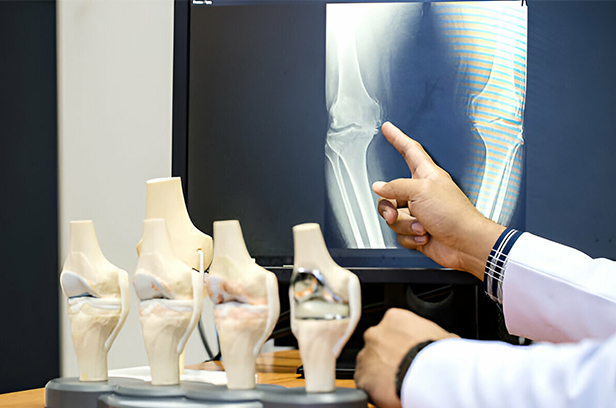
Implantation
The following is the structure that is followed during the implantation stage:
- Intravenous administration
- Liberation angioplasty
- Intrathecal (lumber puncture)
- Intraarterial
- Subcutaneous
- Surgical administration for stroke
- Intramuscular
Mechanism
As a result of the pathogenesis of primary osteoporosis, the rate of bone formation exceeds that of bone dissolution, resulting in increased bone turnover. Primary osteoporosis has several pathogeneses, including homing disorders, impaired osteogenic differentiation, and MSC senescence. The occurrence and progression of osteoporosis are also influenced by an unbalanced microenvironment and disordered immunoregulation.
MSCs migrate to bone marrow to perform a local functional and restorative role, which is the first step in bone repair. MSCs are thought to follow a similar path to leukocyte homing. The first step involves the cells tethering and rolling with the endothelium, causing the cells to decelerate in the bloodstream. The activation of cells by G protein coupled receptors is the second step, followed by integrinmediated, activation dependent arrest in the third step. The cells then migrate through endothelial cells and the underlying basement membrane in the final step.
When homing ability is impaired, it is difficult to ensure that enough MSCs reach the damaged tissue, obstructing bone repair. More importantly, their research highlighted the beneficial effects of overexpression of CXC motif receptor 4 (CXCR4) on MSC migration. MSCs from patients with osteoporosis showed a significant increase in migration and invasion in response to BMP2 or BMP7 stimulation. Nonetheless, when compared to healthy controls, the invasion and migration capacity decreased significantly. To solve this problem, increasing the total number of MSCs through cell transplantation or improving MSC homing through gene modification or targeted peptides would be beneficial.
Multiple transcription factors and signalling pathways control the differentiation of common mesenchymal progenitor cells into various types of skeleton-related cells. The determination of an MSC to become an osteoprogenitor, in which runtrelated transcription factor 2 (RUNX2) directs mesenchymal progenitor cells to preosteoblasts while inhibiting chondrocyte and adipocyte differentiation, is the first step in osteoblastic differentiation. Following that, RUNX2 and Osterix (OSX) direct preosteoblasts to immature osteoblasts that express bone matrix protein genes, effectively removing the possibility of chondrocytic differentiation. Furthermore, it is widely acknowledged that the BMP signalling pathway is important in regulating MSC adipogenic and osteogenic differentiation. The osteogenic differentiation of stem cells is accelerated by BMP2. When combined with activators of the peroxisome proliferator activated receptor (PPAR), BMP2 can be a potent adipogenic agent.Osteoporosis is characterised by a decrease in osteogenic differentiation. MSCs from osteoporosis patients produced a type I collagen-deficient extracellular matrix that favoured adipogenic differentiation in the preliminary stage. Wang et al30 compared the MSCs of postmenopausal women with osteoporosis to those of healthy volunteers, finding that the sensitivity of MSCs to osteogenic differentiation was reduced in osteoporosis patients. MSCs with better osteogenic differentiation ability should be transplanted to reverse this trend. It is also possible to reactivate MSCs’ osteogenic differentiation ability using gene modification and an in vitro activator.
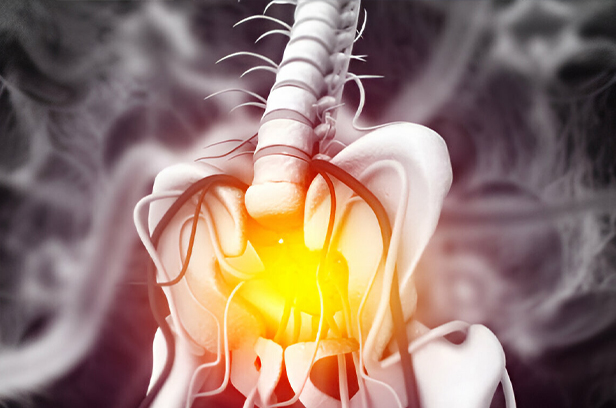

Mechanism
As a result of the pathogenesis of primary osteoporosis, the rate of bone formation exceeds that of bone dissolution, resulting in increased bone turnover. Primary osteoporosis has several pathogeneses, including homing disorders, impaired osteogenic differentiation, and MSC senescence. The occurrence and progression of osteoporosis are also influenced by an unbalanced microenvironment and disordered immunoregulation.
MSCs migrate to bone marrow to perform a local functional and restorative role, which is the first step in bone repair. MSCs are thought to follow a similar path to leukocyte homing. The first step involves the cells tethering and rolling with the endothelium, causing the cells to decelerate in the bloodstream. The activation of cells by G protein coupled receptors is the second step, followed by integrinmediated, activation dependent arrest in the third step. The cells then migrate through endothelial cells and the underlying basement membrane in the final step.
When homing ability is impaired, it is difficult to ensure that enough MSCs reach the damaged tissue, obstructing bone repair. More importantly, their research highlighted the beneficial effects of overexpression of CXC motif receptor 4 (CXCR4) on MSC migration. MSCs from patients with osteoporosis showed a significant increase in migration and invasion in response to BMP2 or BMP7 stimulation. Nonetheless, when compared to healthy controls, the invasion and migration capacity decreased significantly. To solve this problem, increasing the total number of MSCs through cell transplantation or improving MSC homing through gene modification or targeted peptides would be beneficial.
Multiple transcription factors and signalling pathways control the differentiation of common mesenchymal progenitor cells into various types of skeleton-related cells. The determination of an MSC to become an osteoprogenitor, in which runtrelated transcription factor 2 (RUNX2) directs mesenchymal progenitor cells to preosteoblasts while inhibiting chondrocyte and adipocyte differentiation, is the first step in osteoblastic differentiation. Following that, RUNX2 and Osterix (OSX) direct preosteoblasts to immature osteoblasts that express bone matrix protein genes, effectively removing the possibility of chondrocytic differentiation. Furthermore, it is widely acknowledged that the BMP signalling pathway is important in regulating MSC adipogenic and osteogenic differentiation. The osteogenic differentiation of stem cells is accelerated by BMP2. When combined with activators of the peroxisome proliferator activated receptor (PPAR), BMP2 can be a potent adipogenic agent.Osteoporosis is characterised by a decrease in osteogenic differentiation. MSCs from osteoporosis patients produced a type I collagen-deficient extracellular matrix that favoured adipogenic differentiation in the preliminary stage. Wang et al30 compared the MSCs of postmenopausal women with osteoporosis to those of healthy volunteers, finding that the sensitivity of MSCs to osteogenic differentiation was reduced in osteoporosis patients. MSCs with better osteogenic differentiation ability should be transplanted to reverse this trend. It is also possible to reactivate MSCs’ osteogenic differentiation ability using gene modification and an in vitro activator.

Get Stem Cell Therapy for Osteoporosis
In several areas of medicine, particularly musculoskeletal diseases including osteoporosis, the use of stem cells for tissue regeneration has sparked great optimism. Stem cell therapy for osteoporosis can help to replace lost mineral density by raising the number of resident stem cells or restoring the role of resident stem cells that can proliferate and differentiate into bone-forming cells, reducing fracture susceptibility.
The regeneration of new bone and connective tissue is aided by stem cell therapy. Stem cells are used in this regenerative process to regenerate and repair bones, reducing the chance of bone loss. Stem cell treatment may be able to help people with osteoporosis reverse their symptoms. Bones are often thought of as static, stable, and structural, but they are really a highly complex and active
organ. Old bone is constantly replaced by fresh bone using endogenous stem cells. Stem cell treatment helps to improve this regular repair process. Stem cells develop cartilage before becoming new tissue. Intravenous administration of stem cells derived from bone marrow, adipose tissue, or umbilical cord blood tissue may be used to treat osteoporosis. Treatments of drugs or small molecules that attract endogenous stem cells to osteoporotic sites may also be used.
The interior structure of the bone deteriorates with age, leaving the bone less dense, smaller, and with a lack of function. Studies show a connection between osteoporosis and a lack of or deficient stem cells. Global Stem Cell Care in India offers the best and the most reliable treatment to the patients looking for osteoporosis treatment.
HOW GLOBAL STEM CELL CARE THERAPY WORKS?
The use of stem cells has been shown to improve bone resilience, this discovery will change how doctors treat osteoporosis, and shape.
Plasticity, and it could mean the conventional osteoporosis therapies (antiresorptive and anabolic drugs)
will be phased out due to their many side effects.
Global Stem Cell Care extends the best and the most experienced staff when it comes to stem cell treatment for osteoporosis and other ailments.
The use of stem cells has been shown to improve bone resilience, this discovery will change how doctors treat osteoporosis, and shape.
Plasticity, and it could mean the conventional osteoporosis therapies (antiresorptive and anabolic drugs) will be phased out due to their many side effects.
Global Stem Cell Care extends the best and the most experienced staff when it comes to stem cell treatment for osteoporosis and other ailments.
VIP TREATMENT TO PATIENTS AT GLOBAL STEM CELL CARE
The therapy sessions given to the patients at Global Stem Cell Care occur in the VIP treatment room in the advanced clinic.
24*7 supervision is maintained on the patients by the efficient medical team.
Global Stem Cell Care highly recommends the patients stay for a minimum of 3 days in Hospital.
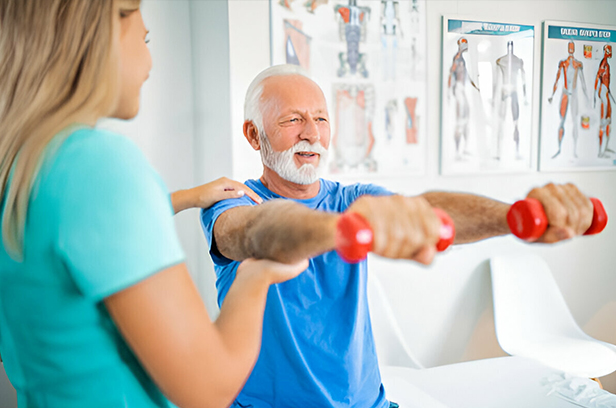
GLOBAL STEM CELL CARE TREATMENT PROCEDURE
The treatments that take place in Global Stem Cell Care are of 3 days. The treatment protocol is safe and non-invasive. The patients can travel the next day. The following is the day-wise schedule for the patients.
- Pick up from the Airport to the Hospital
- Interaction between Dr and Patient, to clear all their doubts at that time
- Admission procedure
- Clinical examination & Lab test will be done prescribed by the doctor
- Supportive Therapy
- Stem cell Procedure
- Supportive therapies
- Physiotherapy
- Supportive Therapy
- Physiotherapy
- Discharging formalities
- Drop back to the Airport
- For Admission, carry the identity card (Passport/ Pan Card / Driving License)
- Carry the hard copy of Patient reports
Our Promise
Treatment of osteoporosis is important because it can be worse over time. That’s why at Global Stem Cell Care, we promise to deliver the best stem cell treatment for osteoporosis in Delhi. Our main focus is to provide you with the care which is essential for the treatment. Every doctor is verified and gets training from reputed institutes to help you with your questions. It is important to follow the safety guidelines and you can trust on this. Your treatment can be done by using the latest technologies and effective methods to ensure you with the best possible outcomes. We always think about your safety and we are committed to provide you with the best possible guidance and services. Our doctors give you transparency during every procedure and answer all your questions with the best knowledge we have.


Cost
Treating osteoporosis with the help of stem cell treatment can be expensive in many countries because of it patients are coming to India. India is the most preferable country and known for its effective and affordable stem cell treatment. If you are thinking about making your treatment done at affordable prices, then Global Stem Cell Care will provide the best stem cell treatment at reasonable prices. There are some factors where cost can fluctuate and that is severity of the condition, the number of stem cells which are necessary for the treatment, past medical condition of the patients, etc. You can take a consultant from our team of experts and discuss the cost before taking the treatment.
Success Rate
You will experience positive outcomes after taking stem cell treatment for osteoporosis from Global Stem Cell Care. Bones are the foundation of our body which help you to make movements. Osteoporosis is the disease which makes your bones fragile and breakable. People who are suffering from this condition get trouble in doing even the basic tasks but now it can be treated through stem cell treatment. Stem cells have the regenerative potential to restore damaged bone tissues. The success rate depends on several factors such as stage of the disease, age of the patients, severity of the condition, etc. Individuals find improvements in their bone density and enhancement in their quality of life.
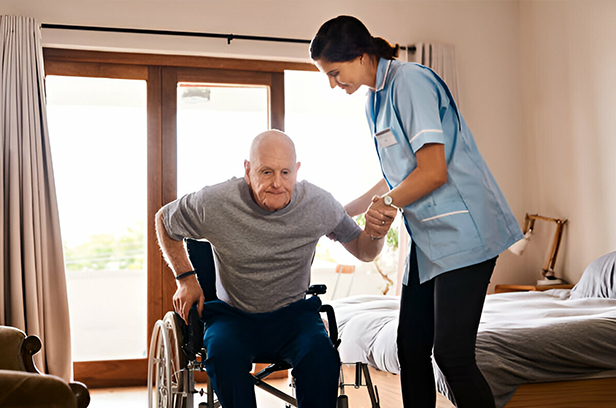

Advantages
Osteoporosis can become a dangerous condition over time that’s why it is necessary to treat it with the help of stem cell therapy. Stem cells are capable to differentiate into specialised cell types including bone cells to treat the root cause of osteoporosis. You can experience several advantages after taking stem cell therapy:
- Stem cell therapy helps to stimulate the patient’s own body regenerative processes. It promotes replacing the weakened areas which are affected by osteoporosis with new bone tissues
- These cells are very helpful to maintain the neuroprotective and neuro-generative properties of itself for a long time.
- Stem cell therapy is an effective and affordable way to treat osteoporosis and individuals experience positive outcomes from this innovative approach.
- Unlike traditional surgical interventions, stem cell therapy typically involves minimally invasive procedures, reducing recovery time and risk of complications.
- By enhancing bone strength and resilience, stem cell treatment may reduce the need for long-term medication dependency, improving overall quality of life for patients.
- Stem cell therapy addresses the root cause of osteoporosis by replenishing bone density, offering potential long-term relief and minimising the risk of fractures.
Quality Control
Global Stem Cell Care is the best stem cell centre in India which offers hope to individuals who are suffering from osteoporosis through stem cell therapy. We know quality assurance is a must in every treatment procedure that’s why we provide high-quality treatment options by using the latest technologies and techniques. There are some quality control standards we use which are mentioned below:
- Patient Screening: Thorough evaluation of patient suitability, considering medical history, bone health assessments, and risk factors.
- Treatment Protocol Adherence: Strict adherence to established treatment protocols and guidelines to maintain consistency and efficacy.
- Stem Cell Sourcing: Procurement of stem cells from reputable, ethically sound sources to guarantee purity and potency.
- Monitoring and Evaluation: Continuous monitoring of patient response and regular follow-ups to track progress and adjust treatment as necessary.
- Regulatory Compliance: Compliance with local and international regulatory standards to ensure patient safety and treatment legality.
- Outcome Assessment: Comprehensive assessment of treatment outcomes through clinical measures and patient feedback to drive continuous improvement and optimise care delivery.
Quality Certificate
Global Stem Cell Care provides a quality certificate for treating osteoporosis with stem cell treatment. This certification assures patients of rigorous adherence to international standards in medical care and research. The certificate underscores the clinic’s commitment to excellence, encompassing thorough patient assessment, personalised treatment plans, and cutting-edge stem cell therapies. With a multidisciplinary team of experts, including seasoned physicians and researchers, Global Stem Cell Care ensures the highest standards of safety, efficacy, and ethical practice. Patients can trust in the clinic’s dedication to advancing the field of regenerative medicine and offering innovative solutions for managing osteoporosis effectively.

What to Expect from Stem Cell Treatment for Osteoporosis?
Osteoporosis is a crippling condition that impacts millions of people around the world. The majority of current osteoporosis therapies are bone-resorbing medications with a variety of side effects.
The use of stem cells for tissue regeneration has sparked a lot of excitement in the medical community, including in the field of musculoskeletal disorders.Through either growing the amount or restoring the activity of resident stem cells that can proliferate and differentiate into bone-forming cells, stem cell
therapy for osteoporosis could theoretically decrease fracture susceptibility and augment reduced mineral density.
Exogenous induction of mesenchymal stem cells (MSCs), which are usually obtained from bone marrow, adipose, and umbilical cord blood tissues, or procedures of drugs or small molecules that attract endogenous stem cells to osteoporotic sites, are two options for treating osteoporosis. The confusion of stem cell fate and biodistribution after cell transplantation is the key barrier to cell-based osteoporosis treatment.
![]() Global Stem Cell Care in India
Global Stem Cell Care in India
Possible Improvement
Through stem cell therapy by Global Stem Cell Care, improvements can be seen in the symptoms of the patients. The main motto of stem cell therapy for Cerebral Palsy is to renew the neurological function in the brain/spinal cord, which was earlier disrupted. After the stem cell treatment, major improvements can be seen in the patients.
The following are the improvements in the patients of Cerebral Palsy:
FOLLOW UP
The follow up is the most important stage through which the doctors make the assessment of the condition of the patient. Without the follow-up, the treatment of Cerebral Palsy cannot be completed. According to the doctor’s recommendation, the patient has to come to visit.
FREQUENTLY ASKED QUESTIONS
Q. What should I do to reduce my risk of osteoporosis?
A.Many risk factors are within your influence if you make healthy lifestyle decisions. There are the following:
- Have enough vitamin D and calcium
- Exercise daily
- Quit smoking
- Avoid substance misuse
- Work with the doctor to correct hormone imbalances
- More about the long-term effects and side effects of the drugs you’re taking.
Q. Why are women more susceptible to osteoporosis than men?
A.The first is that women’s bones are narrower and lighter than men’s. The second has to do with hormones: When a woman reaches menopause, her hormone levels plummet dramatically. This loss delays bone remodelling and can cause the body to lose bone mass more quickly. During menopause, this persists for many years. The rate of bone deterioration gradually returns to premenopausal levels, although in the interim, postmenopausal women are more likely to suffer a fracture. The good thing is that osteoporosis is not a natural feature of the ageing process. There are a variety of lifestyle choices that will help you protect your bones and reduce your risk of developing osteoporosis. You can bring up your bone wellbeing with your healthcare professional if you haven’t already.
Q. Is it true that taking those drugs raises my risk of having osteoporosis?
Q. What should I do to avoid slips and fractures?
A.A fall can cause injury to someone of any age. Because of the increased risk of fracture in people with osteoporosis, it is important that they prevent trips and falls. Here are a few pointers to help you from falling:
- Canes can assist with osteoporosis
- If you use one, use a cane or walker
- Use rubber-soled shoes to avoid slipping
- When the roads are slippery, step on the lawn
- Use ice on snowy sidewalks
- Keep rooms free of clutter
- Wear low-heeled shoes
- Avoid walking in socks or stockings
- Make sure rugs have skid-resistant backs
- Ensure that both stairwells and walkways are well lit
- Handrails can be installed on both sides of the steps
- Install grab bars by the tub, shower, and toilet in the bathroom – Invest in a non-slip bath mat
- Keep a torch by your bedside
- Increase the number of lights in your house such that all rooms are well-lit – Using a durable step stool with a handrail and wide steps to access high cabinets.
Q. How many people do you know who have osteoporosis?
Q. Should I still participate in athletics if I have osteoporosis?
A.Well, indeed! And if you have osteoporosis, you will participate in most activities. According to research, some exercises are more effective than others at reducing bone loss: jogging, biking, basketball, and weight lifting. Owing to the lack of “loading” the bones through interaction with the ground, some sports have several benefits but have little to no impact on bone density: Cycling, diving, and yoga are also good options.
